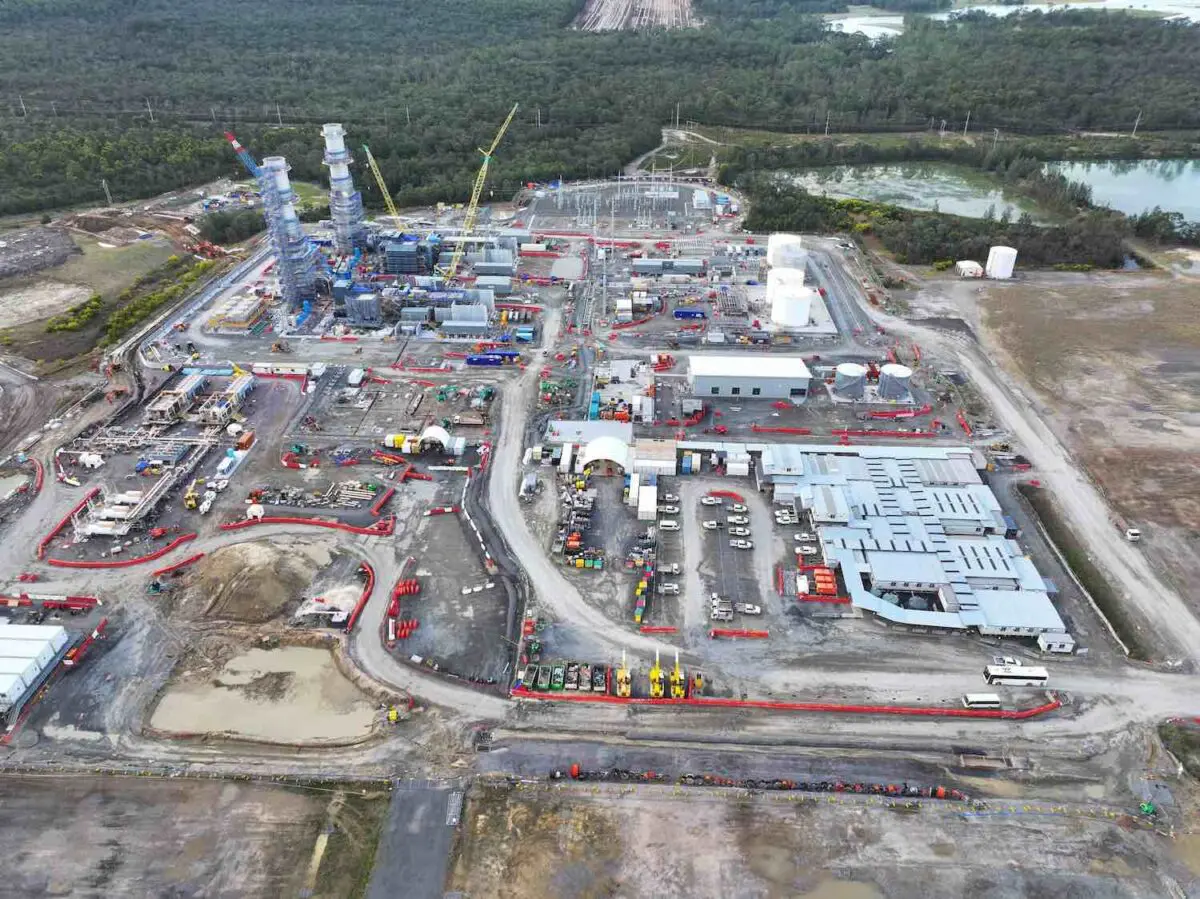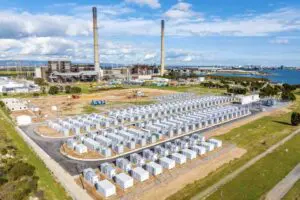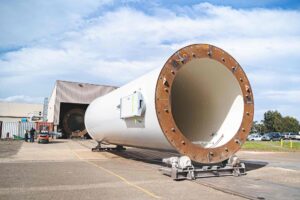Snowy Hydro’s “fast-start, on demand” hybrid hydrogen and gas plant is seeking permission to run entirely on costly and polluting diesel fuel for at least its first year, new documents have revealed, as the over-time and over-budget project continues to fall miserably short of its clean energy ambitions.
In an application to the New South Wales planning department, the federal government-owned gentailer is seeking to allow the Hunter Power Project’s two gas turbines to operate for up to 1,100 hours on diesel fuel in 2025, up from the currently approved limit of 175 cumulative hours per calendar year.
Snowy says the modification – which could send the plant’s year-one emissions soaring by up to 80% – is needed because the pipeline being built to deliver gas to the plant, about 3km north of the town of Kurri Kurri, will not be ready for another year after the generator is commissioned.
Snowy says the delay in construction of the pipeline is due to a combination of factors that include “wet weather [and] hot weather;” you could say the sort of weather that is being exacerbated by climate change, which is in turn being driven by fossil fuel emissions.
The controversial 750MW Kurri Kurri Hunter Power Project, which got its start under the Morrison Coalition government, was kept alive by the Albanese Labor government with the promise of $700 million more in public funding on the condition it was built “hydrogen ready.”
It was soon revealed, however, that the plant would start out using fossil gas only, and that moving to just 15 per cent green hydrogen would be subject to construction delays and lack of availability of the zero emissions fuel.
It has since become clear that diesel will be a major part of the power plant’s early generation equation – quite a long way from green hydrogen – until gas supply and storage infrastructure can catch up with the rest of the development.
The wait for gas comes down to the project’s heavily criticised location beyond the end of the Sydney-Newcastle trunkline, which has meant building a 21km lateral pipeline connection as well as an on-site storage pipeline to the new power plant.
And because it relies on these on site storages, its ability to provide gas back-up in say, the feared “dunkelflautes” (periods of low wind and solar output), would be limited by its inability to operate for than 10 hours before its reserves are exhausted.
The extent of the environmental and economic impact of these baked-in logistical challenges is now being laid bare.
“Construction of the pipeline that will supply natural gas to the power station has experienced delays that will result in the power station being ready to start commissioning before gas can be supplied to the plant,” a modification report submitted by Snowy Hydro said this week.
“Under the current program, commissioning of the power station is expected to commence in late 2024, but construction of the gas pipeline is not expected to be completed until late 2025.
“The delay in construction of the pipeline is due to a combination of factors that include the time taken for a pipeline licence to be granted … and construction delays caused by wet weather, hot weather and industrial action,” the documents say.
Snowy Hydro’s proposal to burn more than six times more diesel fuel in calendar year 2025 requires “temporary relief” from condition A9 in the project’s approval conditions.
This says “fuel burning equipment must not be fired on diesel for the purpose of generating electrical power at the premises for more than 175 cumulative hours per calendar year.”
If approved, this would allow the plant to operate up to its full capacity, according to condition A8, which says “fuel burning equipment must not be operated for the purpose of generating electrical power at the premises for more than 1,100 cumulative hours per calendar year.”
Interestingly, the modification report notes that the environmental impact statement (EIS) of the project assessed the impacts of the power station operating on either gas or diesel fuel, and therefore does not need updating.
Snowy Hydro then goes on to detail the differences in air quality, greenhouse gas emission, noise, traffic, water consumption and waste impacts of the Kurri Kurri plant when it runs on diesel, compared to when it operates on gas.
On greenhouse gas emissions, Snowy says the proposed modification will result in an about 80 per cent increase compared to an update of the scenario for year one emissions presented in the EIS.
“This is due to the combustion of diesel and because the proposed modification would entail an increase in the maximum number of operating hours during the first year,” the documents say.
“Comparing the proposed modification to an update of the scenario for greenhouse gas emissions presented in the EIS for years 2 to 30 where the operating hours are the same, the proposed modification would result in 33 per cent more greenhouse gas emission per megawatt of electricity generated, and an eight per cent increase in the greenhouse gas emissions per hour of operation.”
The number of trucks required for shipping the diesel to the plant, meanwhile, might need to be doubled from the original EIS estimates of a maximum of 12 B-double tanker movements per day (six inbound trips and six outbound trips) between 8:00 am and 4:00 pm.
“This would need to increase in 2025 to a maximum of 24 tanker movements per day (12 inbound trips and 12 outbound trips) between 6:00 am and 6:00 pm in the event that the number of hours of operation on diesel fuel is high,” the modification report says.
“Additionally, there would be a small increase in truck movements associated with additional water treatment chemicals and the additional waste generated by the power station when it operates on diesel fuel compared to natural gas.”
The amount of water needed will also be greater, with the report noting that operation of the gas turbines on diesel fuel consumes will result in the consumption of up to about 235 megalitres of water in 2025 – 155 megalitres more than if the plant operated for 876 hours on gas and 175 hours on diesel.
There would also be a more than doubling of the amount of wastewater produced – about 34 megalitres in 2025 based on each gas turbine operating on diesel fuel for 1,100 hours, compared to 16.2 megalitres using the gas and diesel mix.
But Snowy says these and other impacts of the proposed modification are “worst-case,” with the upper limit of 1,100 hours of operation said to be “substantially greater” than the actual number of hours the turbines are likely to be operated in a typical year.
“And also, once construction of the gas pipeline is completed the turbines would be operated on natural gas in preference to diesel fuel, based on the availability of natural gas,” the documents say.










